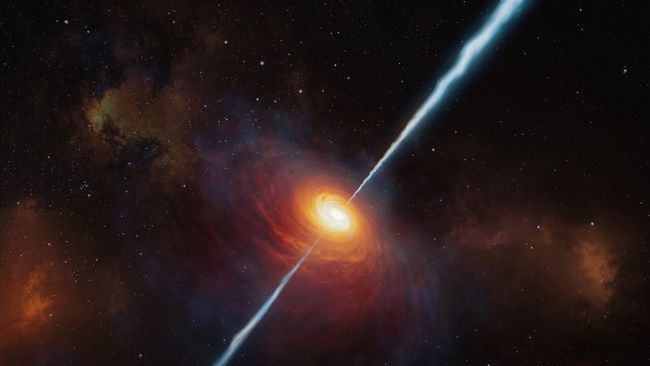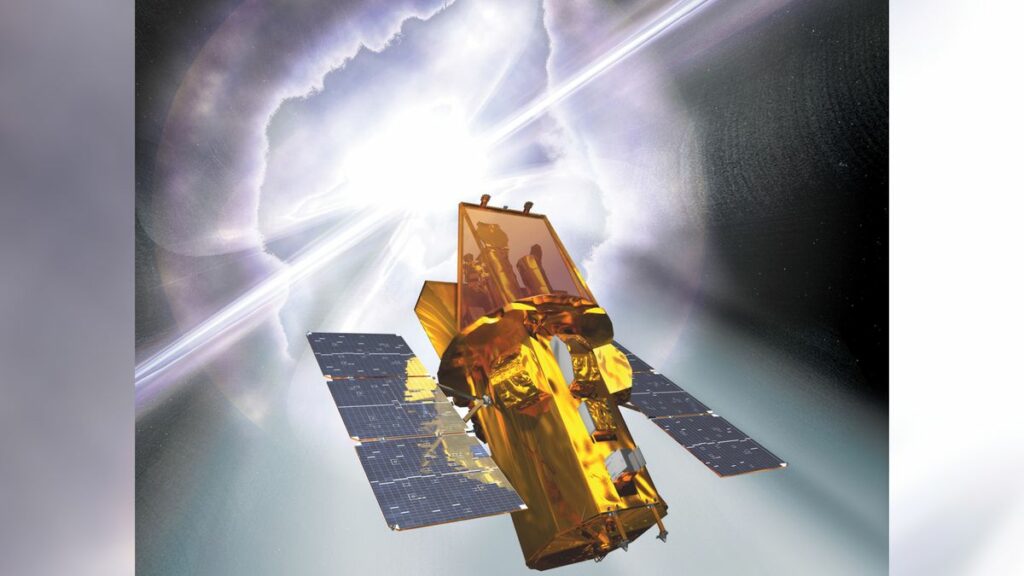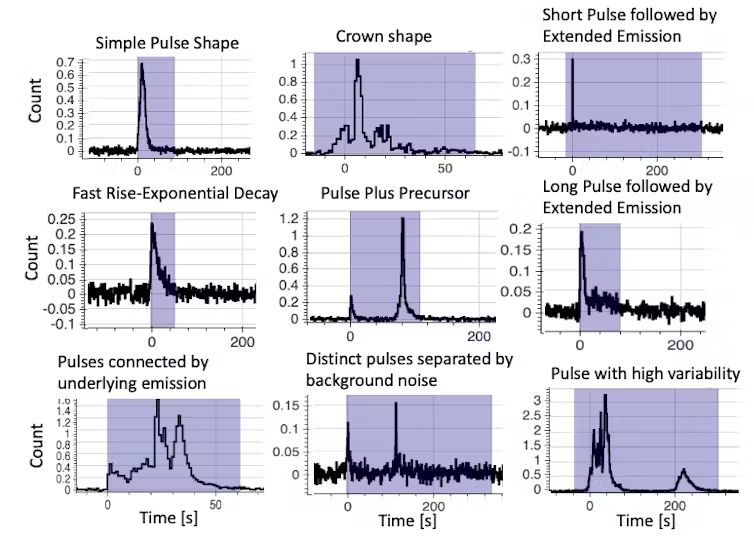The Swift is a wide-band telescope that allows researchers to look deeply into the dark flash that suddenly appears as gamma rays in the universe.

Amy Lien is an Assistant Professor of Physics at the University of Tampa whose research interests lie in understanding how the universe begins and evolves through the most energetic astrophysical explosions: GRBs, supernovas, mergers of neutron stars and black holes, the cited below.
When the farthest stars which are billions of light years away explode, the scarce energy that they discard which is called gamma-ray bursts is emitting beams of lights in interstellar space; so it is not surprising that these bursts of energy are detectable in the Earth using telescopes. Such transient events as well as those that emit a pulse also from the merging of some fascinating extra-galactic bodies magnetic in their nature such as neutrons or black holes give us the opportunity not only to watch the unfolding of the universe history but to be discernible players in the process.
On average, one gamma-ray burst is detected per day by space telescopes, and the result is hundreds of separates bursts discovered from the time telescope have been in space, and a wide community of voluntary researchers are making this research into burst possible.
On the 20th November, 2004 Swift Observatory was put into orbit; it is also known as the Swift. Swift is a multifilter analysis space scope that researches are using to reveal more about these remains riddles gamma-ray flash that came out from the universe.
The main characteristic of gamma-ray burst is the duration of the event which is only a few moments or minutes, and typically, most of the emission is in the form of gamma rays that the human eyes are not capable of seeing. The Gamma radiation carries a lot of energy and verily can harm the tissues of human organs and DNA.
A fortunately, Earth’s atmosphere saves most gamma rays from space and that’s why you need an orbital telescope like Swift in order to record these bursts. Swift has already captured over 1,6000 gamma rays bursts in the span of the mesh’s 19 years of observations. The data gathered from the transit and eclipse observations help astronomers on the ground find the distances to such objects precisely.

Looking back in time
The Kepler as well as other observatories have provided to the astronomers crucial information that gamma-ray bursts, being the most powerful type of explosions in the universe, are an outstanding fact. This is incredible since the astronomy instruments like space telescopes such as Swift can locate them across the extremely vast expanse of the universe.
It was being found out that gamma rays are a part of the mighty universe, as they were among those which were observed the furthest by telescopes.
Given that light moves at finite speed, astrophysicists actually gaze into the past when peering exactly far away in the universe.
The longest duration gamma-ray burst ever discovered was witnessed from so far that it had to travel a total of 13 billion years to get onto its destination- our earth. This means that, for instance, when gamma rays were imaged by telescopes, they as made in 13 billion years ago a different way.
The gamma-ray bursts are a tool for astronomers that shows them everything since the universe formed, how it created the first stars that evolved into bigger ones over time.
Types of gamma-ray bursts
The astral body of knowledge has grasped the fact that bursts of gamma rays are generally divided into two categories – long and short. Their pacemaker function is based upon the duration of pulses. Gamma-ray bursts with pulses longer than two seconds can be of two types – one being associated with supernovae i.e., exploding stellar objects.
As a star with a mass equal to or greater than 8 times that of our own Sun runs out of fuel, it will generates a supernova and collapses to form a neutron nature or a black hole.
Both neutron callars and black holes are very tightly knotted. If we make the entire the Sun the size of 12 miles which the diameter of Manhattan, it would be the same density as a neutron star.
In some extreme cases, the largest stars even can cause a jet of gamma rays when they protrude. They are a powerful tool that is produced by conversion of white light into a narrow beam, which is a conditioned magnetic field and charged particles. With Earth being the target, these jets are supposed to be shot to the ground. Such rays will be observed by the magnetometer rather than by the telescope.
However, on the contrary the duration of long ones is up to 2 s whereas that of short ones is less than two seconds. Astronomers look at the matter in this context and come to the conclusion that most of these objects are born because either two neutron stars or a neutron star and a black hole complete the merging procedure.
If a neutron star comes too close to another neutron star or join another black hole in close orbit, the two objects will begin to spiral closer and closer together, till out of gravitational radiation’s losing some of energy.
They in turn get amalgamated and then finally discharge short spouts. Shooting towards earth, those short jets lead to detection of them as short gamma-ray.
Classifying gamma-ray bursts
The classification of ruptures either as short or long-lived is not so uncomplicated. In the latest findings from the astronomers, of course, some bizarre short gamma-ray bursts has been attainted which is counter to the expected collision with a supernova. Also, these objects have confirmed some of the long gamma-ray flare from the mergers in place of supernovae.
Such strange instances demonstrate, despite that, the mystery of gamma-ray bursts is still not broke. The astronomers are provided with the recommendation that they should improve their understanding of the gamma-ray pulse as per their shape to unsubscribe the pulses from their origins better.
Yet, it is difficult to systemize the shape of pulses, distinctions to be different than the duration of pulses, in classifying them. Shape of a pulse can be very complicated and involve fully-fledged zigzag patterns. Thus far, it was only a few individuals who had enough expertise to correctly map all the constants and hidden patterns that they were interested in.

Community science
My colleague and I have taken part in public astronomy nights at the observatory and gained volunteers willing to help us. Volunteers discover how to identify the signatures of groups and afterwards classify them by their looks on their individual screens.
Early observaitons indicate the conspicuity in which volunteers – also known as citizen scientists – are able to learn and grasp the structures in these multi-channel pulses just within a few hours only. Analyzing the products of these observations will help astronomers better understand how these intriguing flashes are originated.
We plan to have a discussion of if indeed a signature of more gamma-ray bursts within the dataset means that the traditionally observed short and long classification no longer holds. We’ll apply this information to do that properly probing universe ancestors’ history using gamma-ray bursts extracted data.
The citizen science initiative we have been developing and which we presented as a preliminary result is called Burst Chaser. New volunteers are signing up, and we are welcoming everybody to join our investigation where we seek to uncover the truth behind SpaceX’s Starlink constellation.
Read the original article at The Conversation.
This article was originally published at The Conversation.
Do not forget to share your opinion with us to provide you with the best posts !



0 Comments